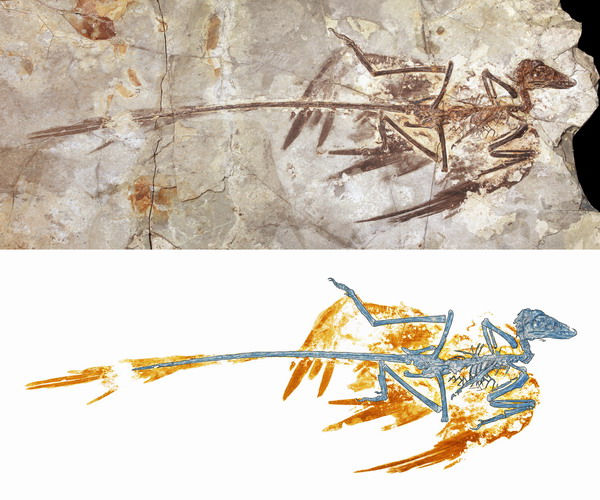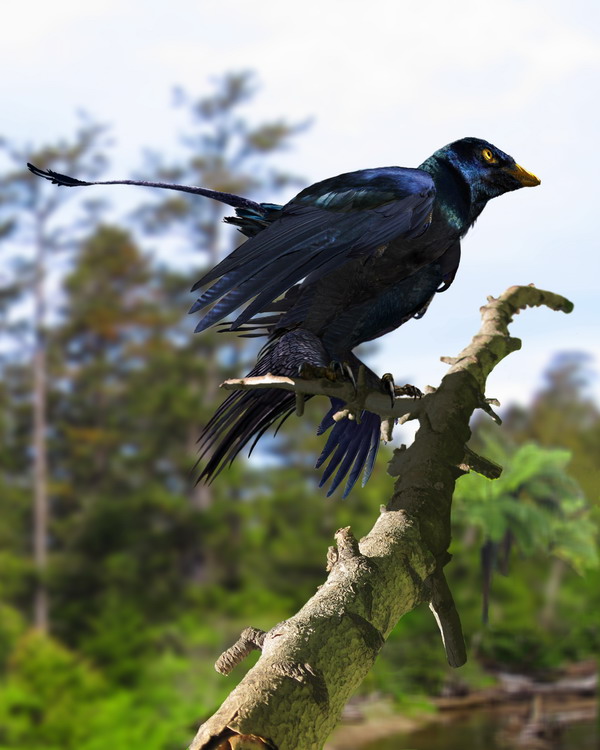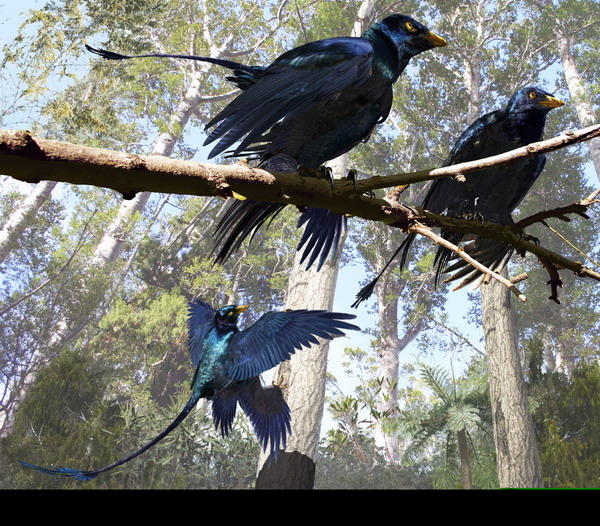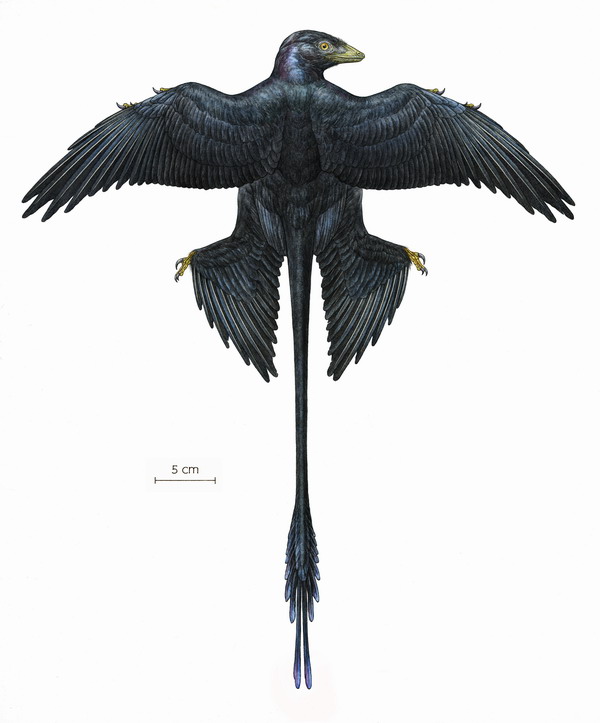News
Scientists from China and the US worked together to restore the iridescent feather color of Microraptor
published:2012-06-19
Dinosaurs were formerly believed by most people to be huge, terrifying and scaly cold-blooded animals. Yet, this understanding has been substantially changed with the discovery of feathered dinosaurs in western
On March 12, 2010, a team comprised of Chinese and American scientists reported in a Science paper the restoration of plumage color of Anchiornis huxleyi. And today, on March 9, 2012, a team led by Dr. Meng Qingjin, Director of Beijing Museum of Natural History, and Dr. Mark Norell, dinosaur expert of American Museum of Natural History at
The delicate fossil studied in the research project is a Microraptor specimen conserved in Beijing Museum of Natural History.
The study predicts that the plumage of the ‘four-winged’ dinosaur was predominantly iridescent. The capacity for simple iridescent arrays is thus minimally inferred in paravian dinosaurs. This finding and estimation of Microraptor feathering consistent with an ornamental function for the tail suggest a centrality for signaling in early evolution of plumage and feather color.
By comparing the melanosomes preserved in the fossil with samples taken from extant birds, the team finds that the plumage of the dinosaur was mainly iridescent. Iridescent colors are produced through coherent light scattering by laminar or crystal-like arrays generated by layers of materials with different refractive indices, namely keratin, melanin, and sometimes air, in feather barbules. Before the current study, fossil evidence of iridescent plumage had been limited to a 47-million-year-old isolated avian feather from
The reconstruction of the plumage and feather color allows us to have a look of the real appearance of the long extinct dinosaur. The longest tail feathers in Microraptor are a midline pair that form the most posterior part of the fan. Previously interpreted as a relatively broad, teardrop-shaped surface or as paired, laterally expanded rectangular winglike surfaces with an important aerodynamic function, the fan surface area is appreciably narrower. The graduated tail shape with a pair of long, midline feathers may be consistent with an ornamental or signaling function. Iridescent color and the plumage suggest that feather ornaments were diverse and that multiple cues may have been copresent.
Beijing Museum of Natural History in recent years has collected many scientifically valuable fossils from the Jehol Biota at western
The research was made possible by the proper positioning of the museum concerning its core functions. Beijing Museum of Natural History, while maintaining a focus on museology, strives to build its research capability in different areas of study, by enriching its collections, creating partnership with specimen production bases, research institutions and renowned researchers, as well as maintaining presence in key disciplines.
The study was supported by National Science Foundation of China, Beijing Academy of Science and Technology (BJAST) Innovation Team Fund, and US National Science Foundation.

Microraptor fossil and the sampling illustration

Reconstruct 1

Reconstruction 2
Reconstructions 1 and 2 made of Jason Brougham of University of Texas

Reconstruction 3 made by Mick Ellison of American Museum of Natural History